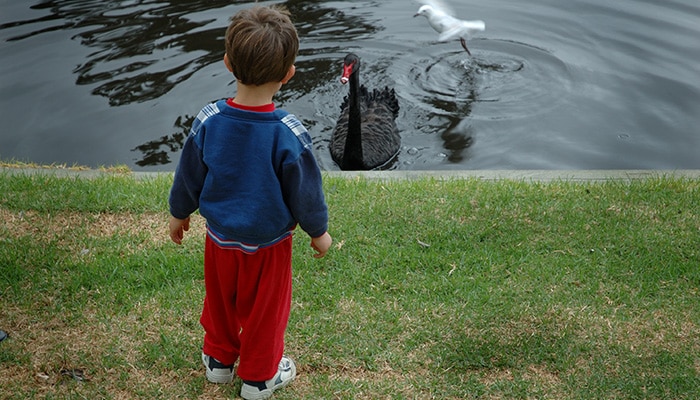While we believe that the books and resources recommended may be of value to you, keep in mind that these are suggestions only and you must do your own due diligence to determine whether the materials are appropriate and suitable for your use. PNC has no sponsorship or endorsement agreement with the authors or publishers of the materials listed.
ANIMAL FRIENDS

Walk, Swim or Fly
The children will investigate how different animals move.

Lesson Objective
The children will investigate and predict how an animal moves by observing its physical attributes.
Science
What You'll Need
- Pictures of various animals from around the world: penguins, camels, ostriches, bears, iguanas, gorillas, dolphins, owls, whales, crocodiles, and so on (see Lesson Tips)
- Labels for sorting animals: “walk,” “swim,” and “fly”
What To Do
- Display the animal pictures.
- Tell children that they are going to explore how the animals move.
- Invite one child at a time to choose an animal picture and to use their words to tell (or demonstrate) how they think it moves.
- Have children tell what it is about the animal that allows it to move this way (see Guiding Student Inquiry).
- Invite the class to move like this animal moves.
- Ask the children to categorize each animal picture under one of these categories: walk, swim, or fly.
- Some children may notice that a particular animal can move in more than one way. A penguin, for example, can walk and swim. Allow the child to place the animal where they think it best fits or to write the name of the animal under the additional label. Talk about animals that can move in more than one way.
- Continue inviting children, in turns, to choose an animal picture, and continue through Steps 4–7, as above.
- Once the animals are sorted, discuss what it is that the animals under the same label have in common.
Resources
Home School Resources
Home educators: use these printable lesson PDFs to teach this lesson to your home schoolers. They're available in English and Spanish.
Content Provided By
Common Core State Standards Initiative – These lessons are aligned with the Common Core State Standards ("CCSS"). The CCSS provide a consistent, clear understanding of the concepts and skills children are expected to learn and guide teachers to provide their students with opportunities to gain these important skills and foundational knowledge [1]. Visit the CCSS


